
Admiralteiskaya Embankment is one of the embankments in the center of St. Petersburg (2nd Admiralteiskiy Island), which stretches along the Neva River.
The history of the existence of this place dates back to 1704, when the Admiralty House was erected, and this part of the shore of the Bolshaya Neva was used as an exit to the river of the shipyard.
In 1873-1874, after the termination of shipbuilding works and filling of channels on the territory of the Admiralty, a high granite embankment with granite parapets was created according to the project of engineers V. M. Karlovich and S. S. Selyaninov.
At the end of the 19th century, apartment buildings were built along the embankment.

During its existence, the embankment has changed its name more than once. So, in 1922, the embankment was named after the Bolshevik S.G. Roshal, in January 1944, the historical name of the embankment was returned - "Admiralteiskaya", after the Admiralty building located here. The word "admiral" itself is of Arabic origin, and literally means "lord of the sea".
Admiralteiskaya Embankment is located on the left bank of the Neva River and stretches from the drawbridge of the Palace Bridge (Palace Embankment) to the end of the Senate Square (English Embankment).
The length of the Admiralty embankment is about 600 meters.
Admiralteiskaya is a new type of embankment, the so-called esplanade type. There is a sidewalk near the Neva River, as well as lawns and flower beds, behind which there is a passing road, on the opposite side of which there is a sidewalk and historical buildings rise.
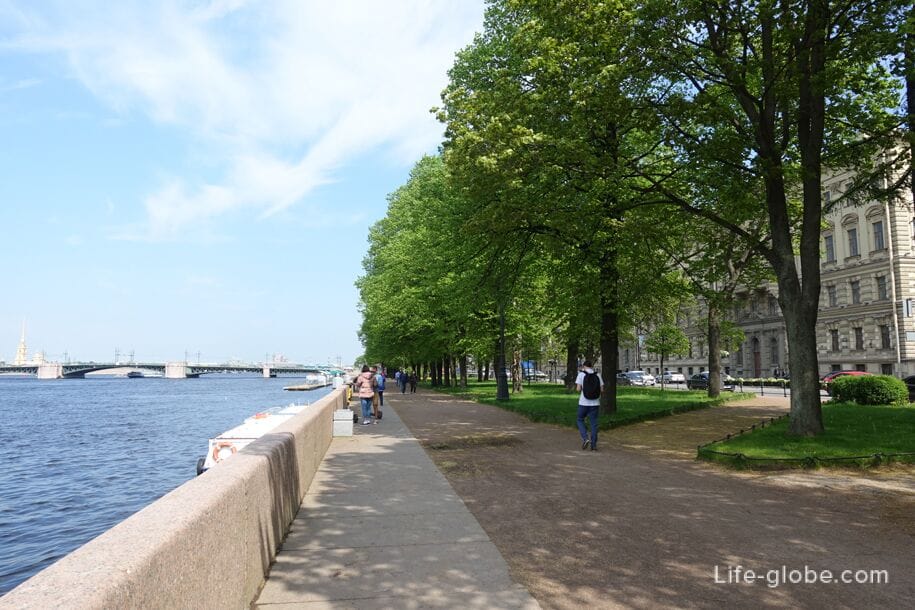
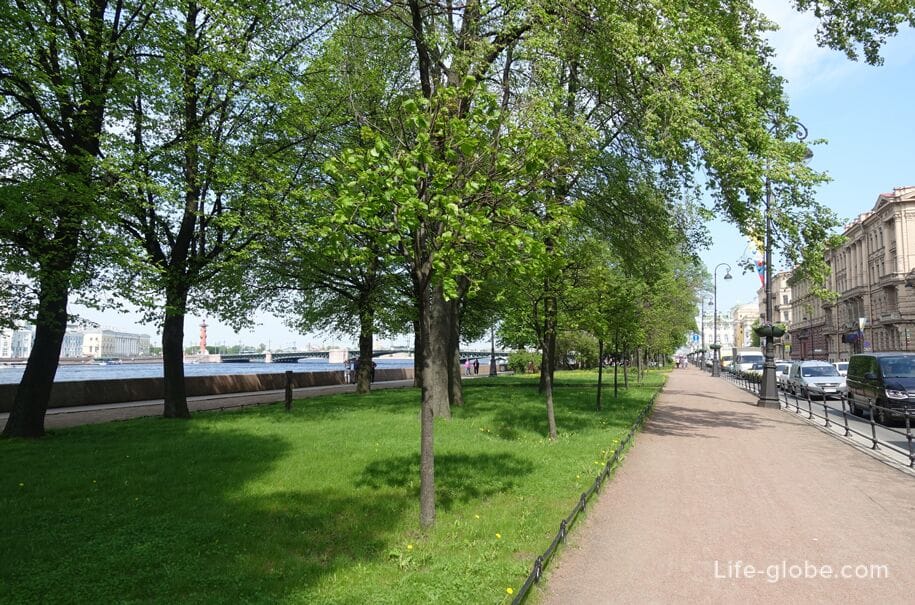


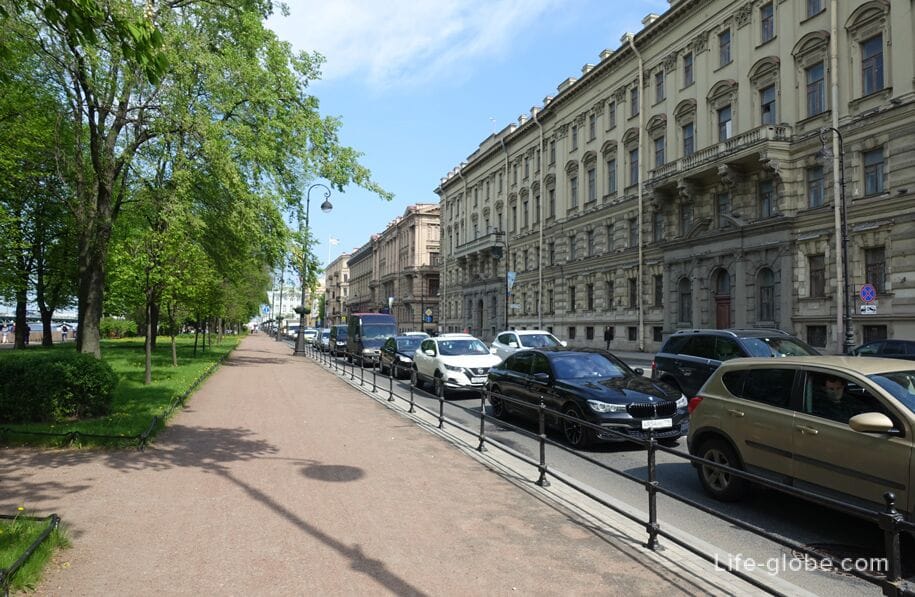
At the very beginning of the Admiralty Embankment across the Neva River is thrownThe Palace Bridge, which connects the embankment (2nd Admiralty Island) with Vasilievsky Island and is the most famous bridge in St. Petersburg.
The total length of the Palace Bridge is 267.5 meters, and its width is 31.6 meters.
The bridge is a roadway and pedestrian, as well as a drawbridge. A central double-winged span is being built at the Palace Bridge. Learn more about the Palace Bridge…


There are berths for pleasure boats on the Admiralty Embankment:
- "Senatskaya pier", located almost on the border of the Admiralty and English embankments;
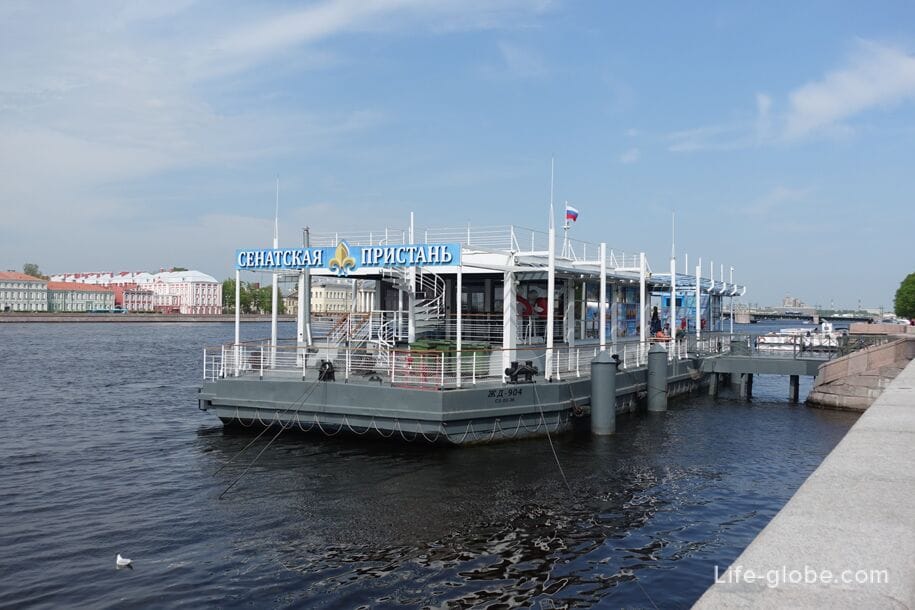
- Admiralty Pier (Petrovsky descent to the Neva River) and Palace Pier, which are historical piers.
Both piers were built in 1820-1824 by engineer A. D. Gotman, according to the project of architect K.I. Rossi.
The piers are wide granite staircases leading down to the waters of the Bolshaya Neva. Each pier consists of two flights of eight steps, separated by a small granite platform.
The piers are located near the wings of the Admiralty building: at the western - Admiralty pier and at the eastern-Palace pier.
On the Admiralty Pier, two large vases made of polished Swedish porphyry, made at the Elfdalen Lapidary Factory in Sweden, are installed on granite pedestals. In 1830, the vases were presented to Russia by the King of Sweden and they were first placed in The Tauride Palace. In 1832, the vases were installed on the Palace Pier. In 1914-1916, in connection with the construction of the Palace Bridge, the Palace Pier was moved downstream, and the vases were moved to Petrovskaya Pier.
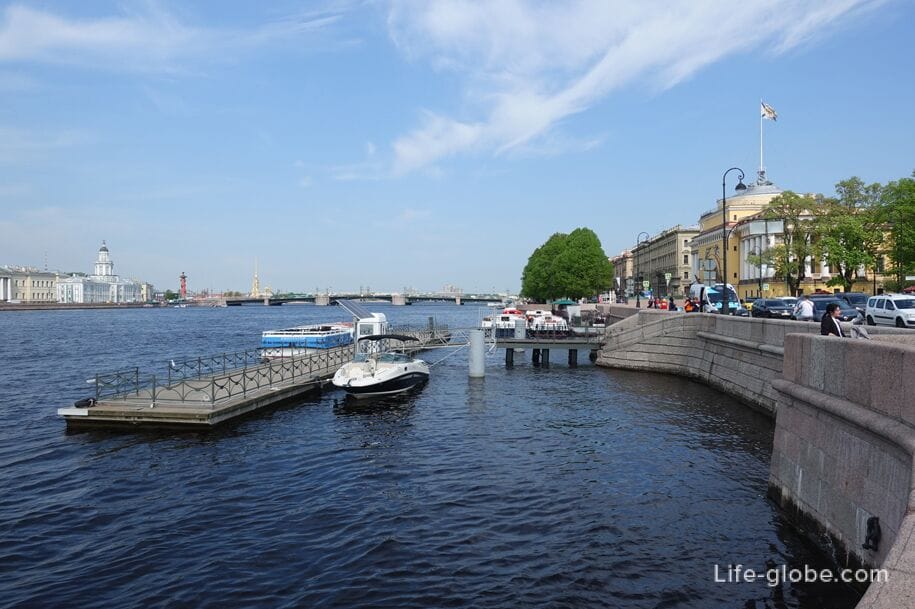
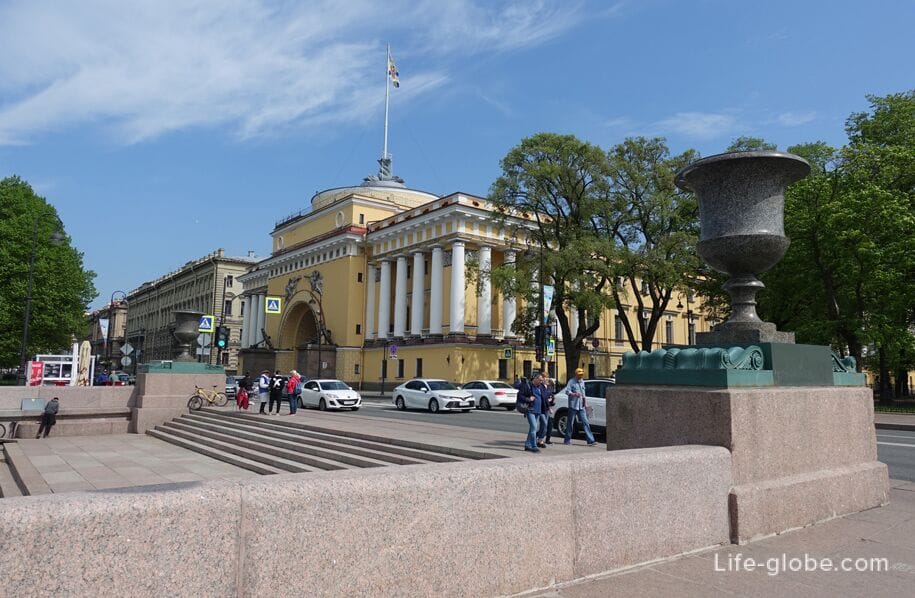
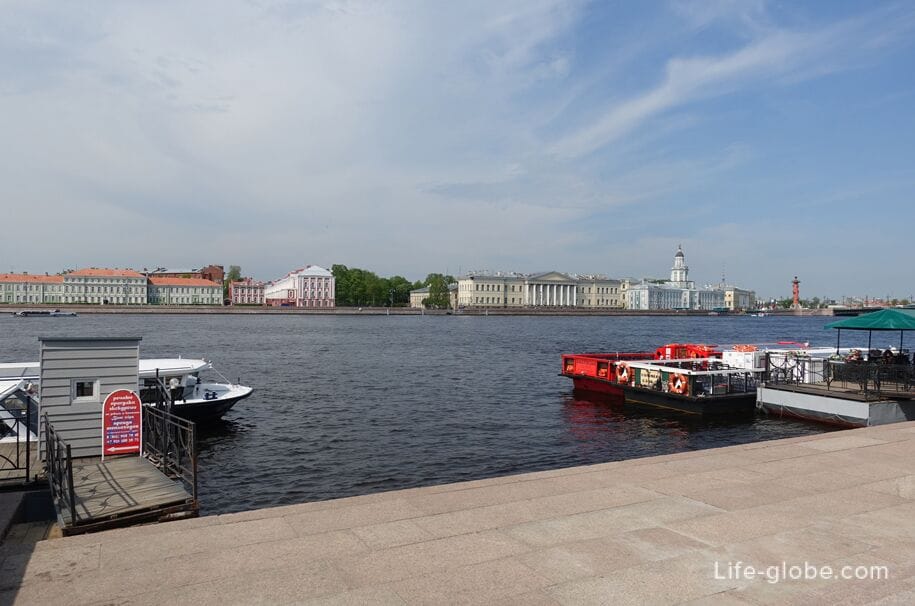
The Palace Pier is decorated with the famous copper sculptures of two lions, located on granite pedestals on both sides of the wide staircase of the Palace Pier. The sculptures were installed in 1832 and today are the most famous lions of St. Petersburg. Read more about the Palace Embankment with sculptures of lions…
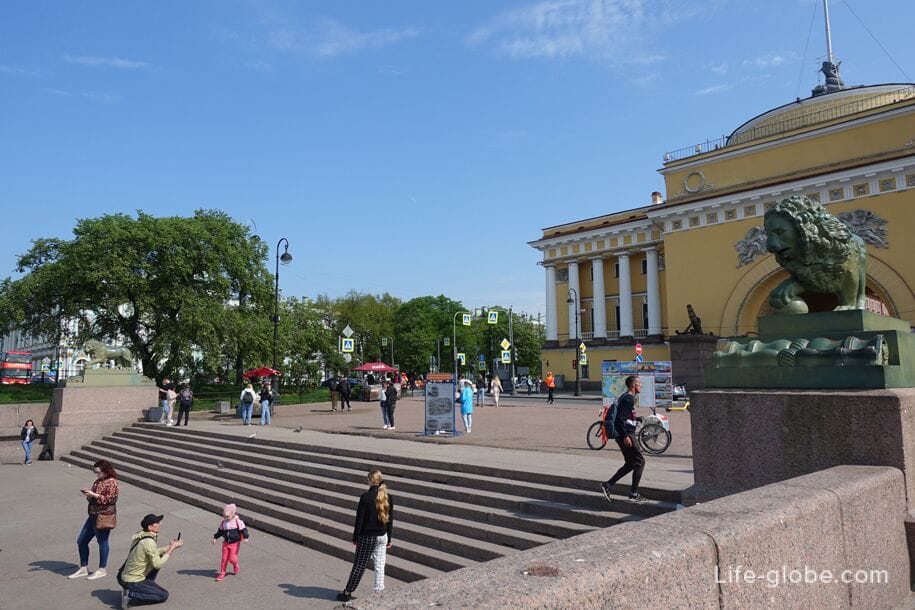

The berths of the Admiralty Embankment are also used for pleasure boats, on which during the navigation period you can make a water excursion along the rivers and canals of the city.
Also from the pier there are "Meteors" to Kronstadt and to The lower Park of the Grand Palace of Peterhof.
One of the main decorations of the Admiralty Embankment is the sculpture "Tsar-Carpenter", located near the Palace pier.
This bronze sculpture has an interesting history, is one of the most famous monuments to Peter I in St. Petersburg and depicts a young Peter studying shipbuilding craft.
According to local tradition, the monument helps to find a good job and quickly move up the career ladder. To do this, you need to go to the "Tsar-carpenter", ask Peter and touch the sculpture. Read more about the monument "Tsar-Carpenter"…
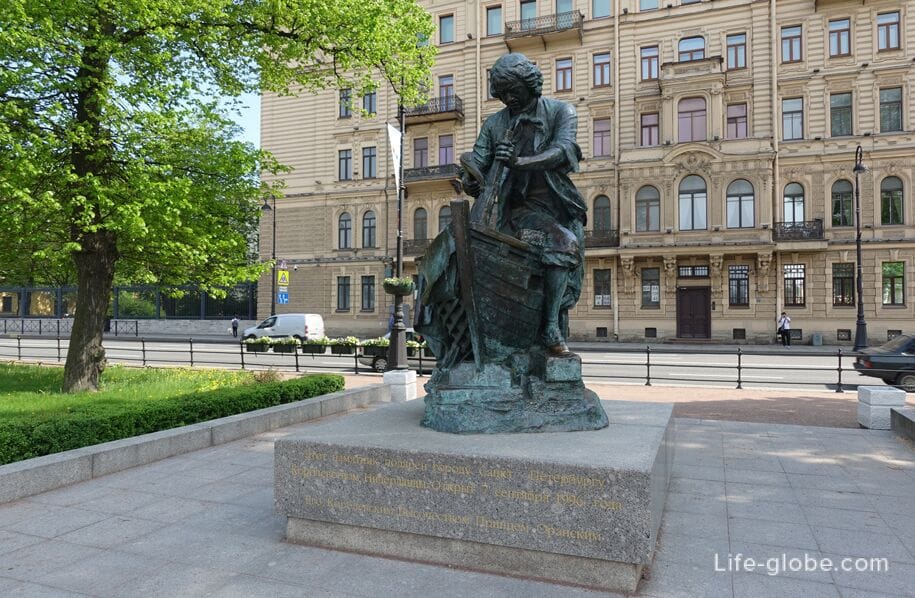
From the Admiralteiskaya Embankment, Vasilyevsky Island (University Embankment) is clearly visible, located on the opposite bank of the Neva River, where you can see, among other things: the arrow of Vasilyevsky Island, The Kunstkamera, the building of the Twelve Colleges, the Menshikov Palace, etc.
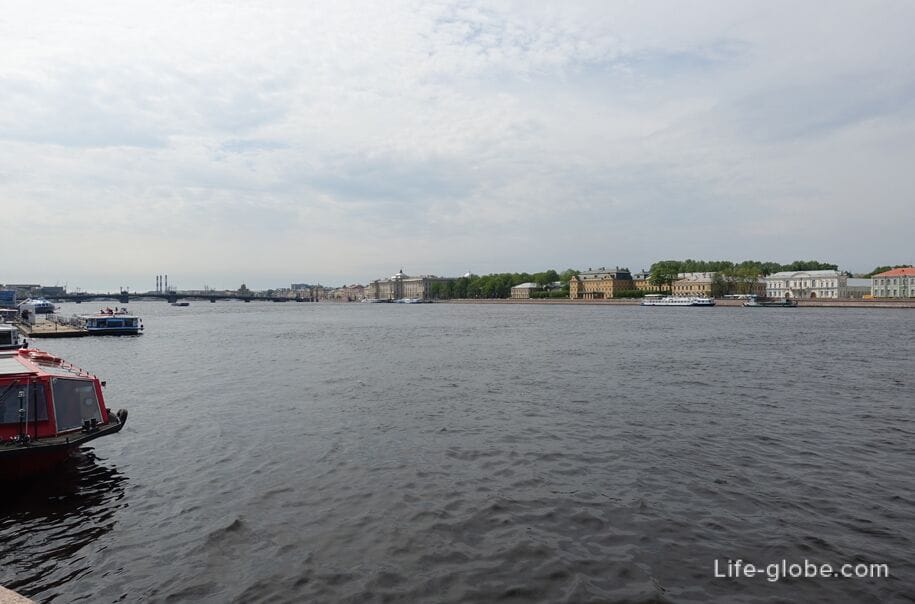
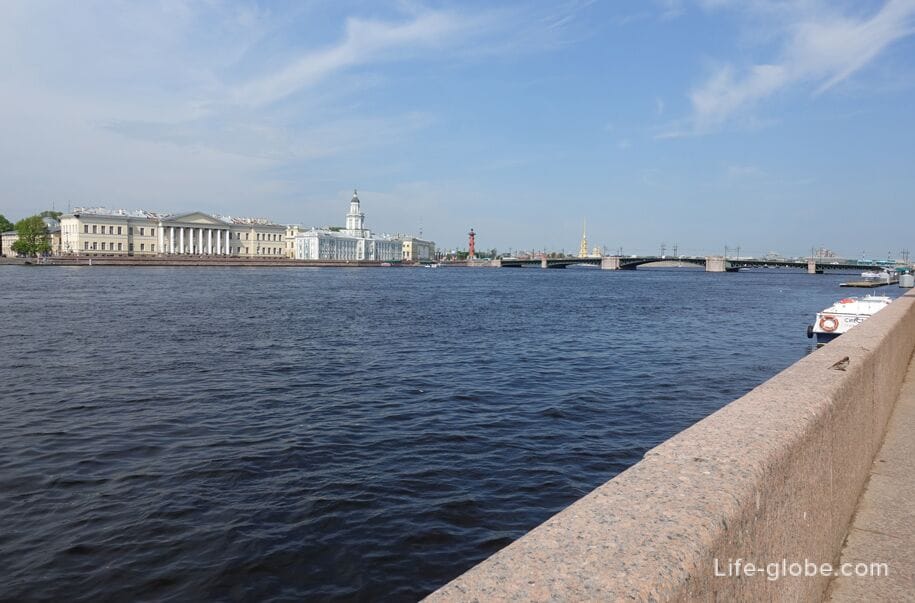
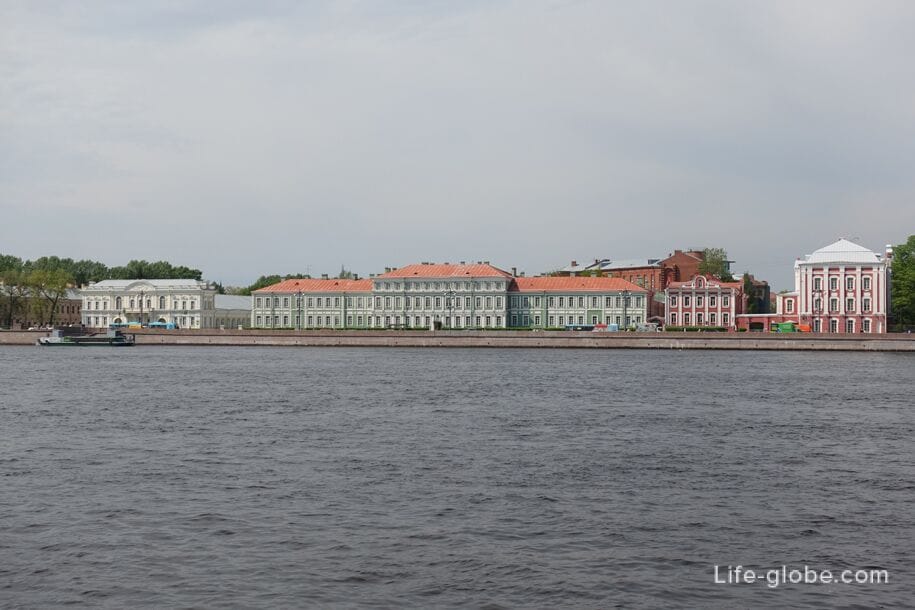
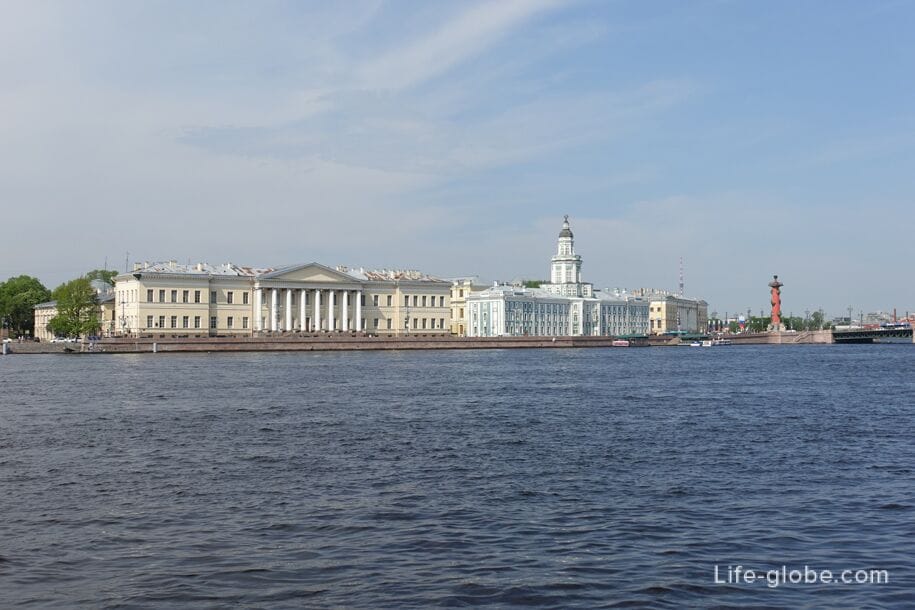

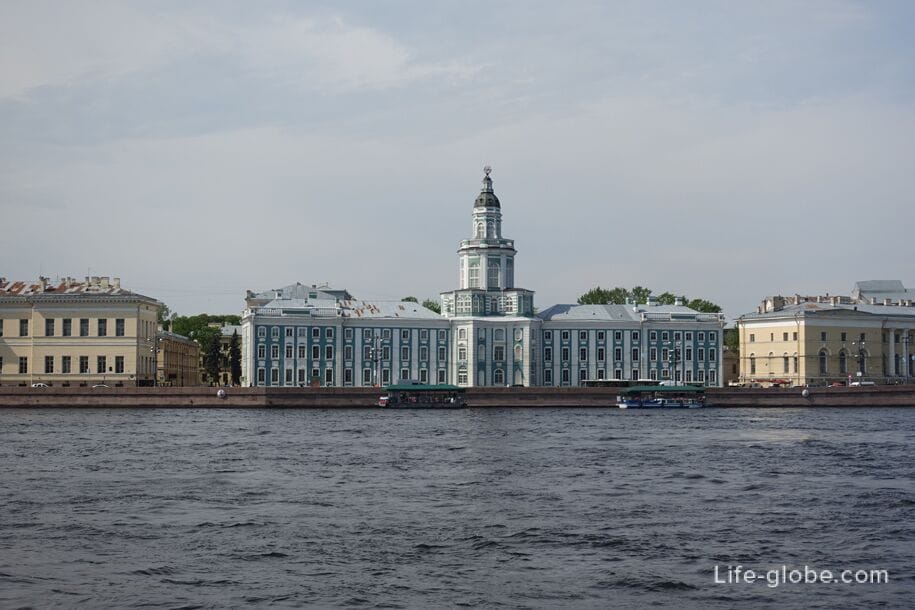
The wings of the main Admiralty, which are the first and last buildings on the Admiralty Embankment (No. 2 and No. 16).
The facades of the wings have arched openings (passages), which are decorated on both sides with anchors mounted on high pedestals. Sculptural decorations also stand out, including "Geniuses of Victory with Banners in their Hands" and laurel wreaths. Learn more about the Admiralty…
The northern facade of the eastern wing of the Admiralty
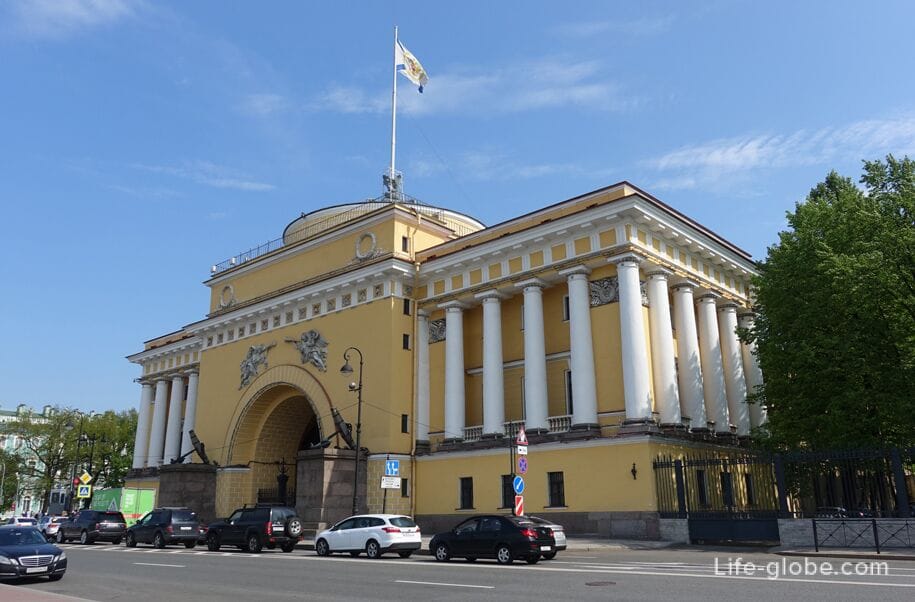
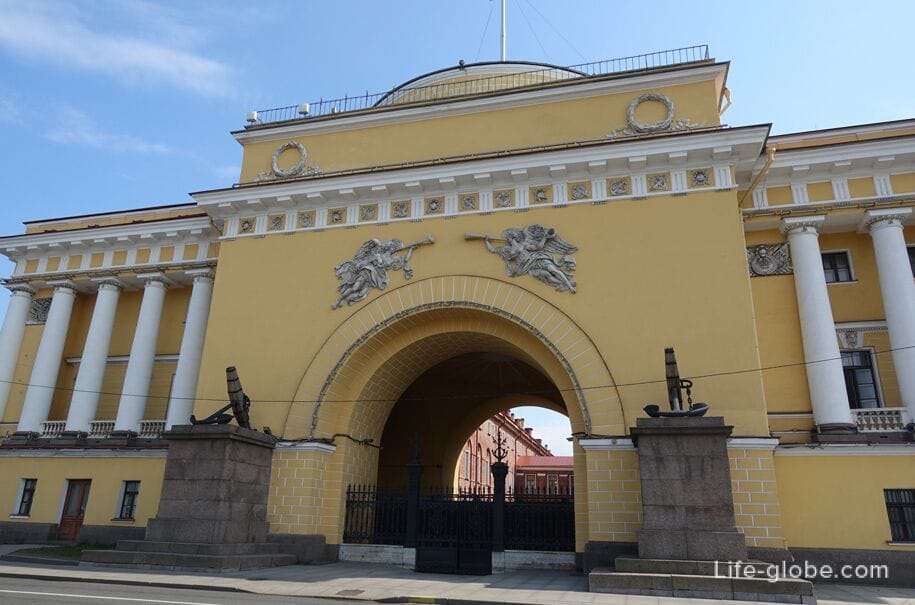
The northern facade of the western wing of the Admiralty

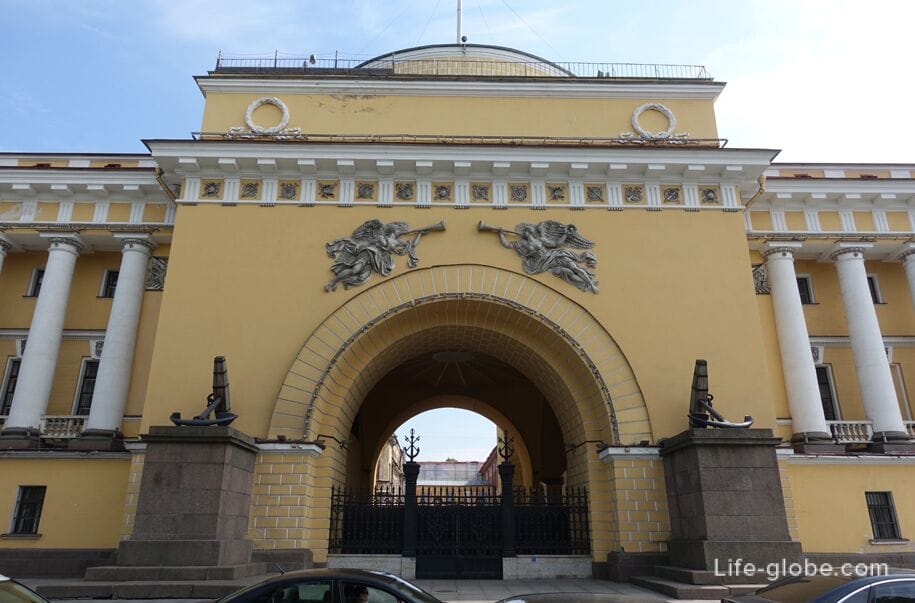
In the interval between the wings of the Admiralty there are buildings that were erected in the courtyard of the Admiralty, which was given to private owners for construction in separate plots. Multi-storey construction began here in the 1880s and led to the fact that the houses closed the rear facade of the Main Admiralty building.
Admiralteiskaya Embankment 4-an apartment house and the theater of V.A. Panayev ("Panayevsky Theater").
The building was built in 1886-1887 by the civil engineer Dmitry Konstantinovich Prussak. In 1897, the architect Anatoly Ivanovich Kovsharov designed the facade of the building along the Admiralteiskaya Embankment.
The building was destroyed by fire in 1917, after it was dismantled, and the secondary school building No. 225 was built on this site in 1958.
The school building is located in the depth of the plot and there is a small square in front of the building.
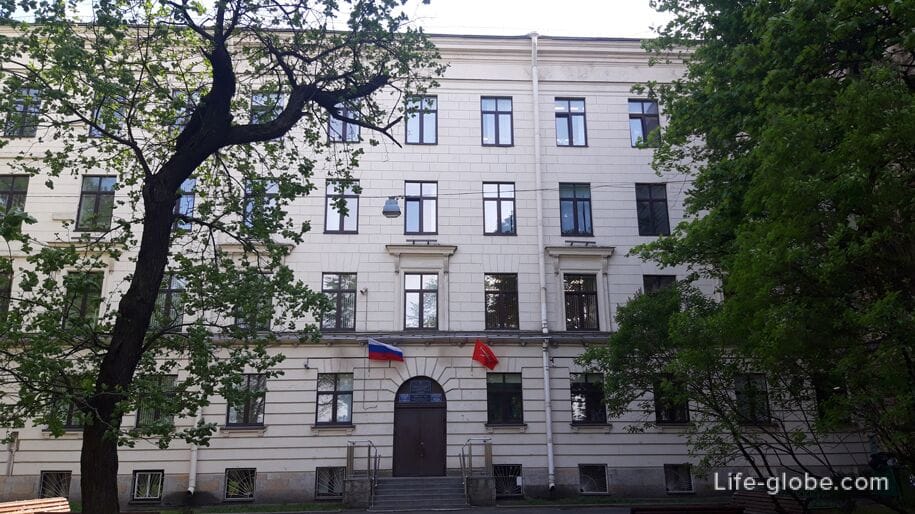
Admiralteiskaya Embankment 6-apartment house of T. V. Makarova / building of the insurance joint-stock company "Russian Loyd".
The building was built in 1879-1880 by the architect Alexander Khristoforovich Kolb as an apartment house of T. V. Makarova. It was rebuilt in 1911 by civil engineer Pavel Karlovich Bergstresser for the insurance joint-stock company "Russian Loyd".
The style of the building is eclectic, in the Renaissance-Baroque style. In the center of the facade there is a powerful bay window, supported from the first floor by four semi-figures of caryatids.
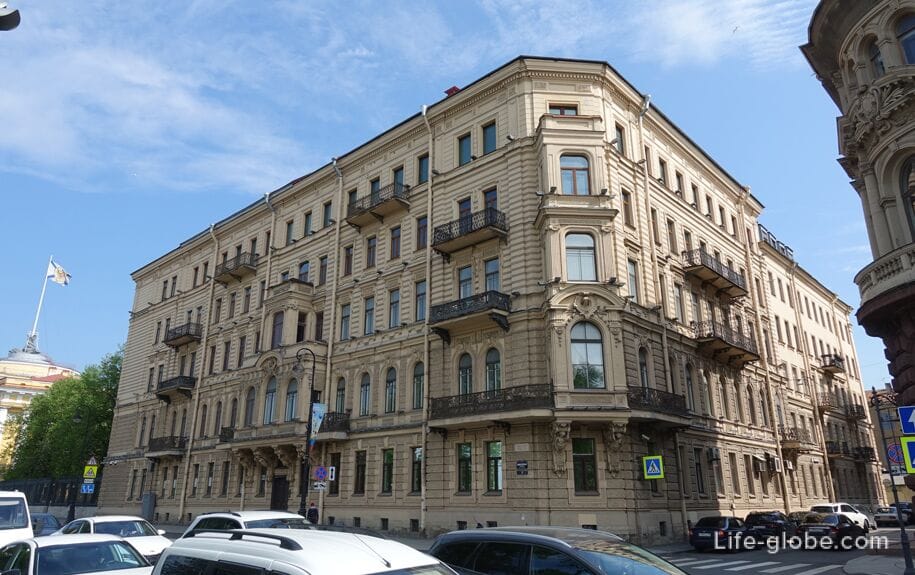
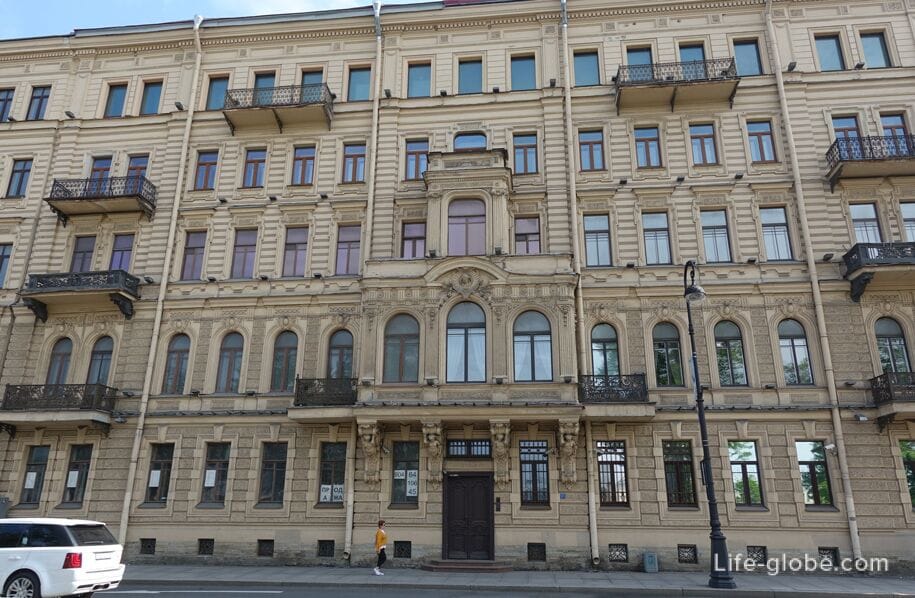
Admiralteiskaya Embankment 8 - the palace of Grand Duke Mikhail Mikhailovich, grandson of Nicholas I and great-uncle of Nicholas II.
The construction of the palace took place according to the plans of the architect Maximilian Yegorovich Mesmacher in 1885-1891.
In 1917, the former palace was nationalized and changed its owners several times.
Today the palace is an architectural monument of the 19th century. Stylized as the Italian Renaissance. Read more about the Mikhail Mikhailovich Palace…
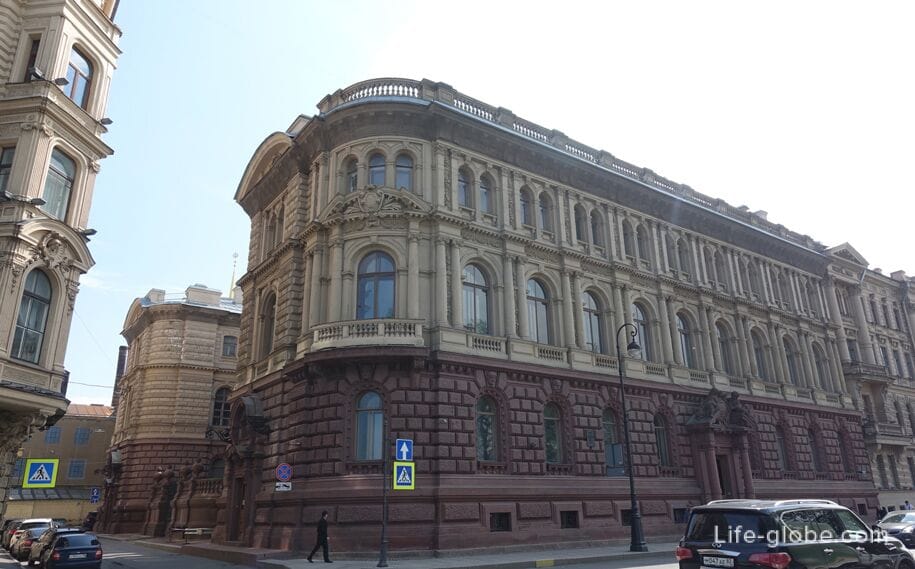

Admiralteiskaya Embankment 10-apartment house of O.N. Rukavishnikova.
The building was built in 1880-1881 by architects Alexander Fedorovich Krasovsky and Vladimir Rodionovich Kurzanov.
The building is famous primarily for the fact that in 1890 and 1893 the composer P.I. Tchaikovsky lived here, and in 1906-1910 the Russian geophysicist Prince B.B. Golitsyn lived here. In Soviet times, the building was allocated for the Consulate General of the GDR.
The style of the building is eclectic.
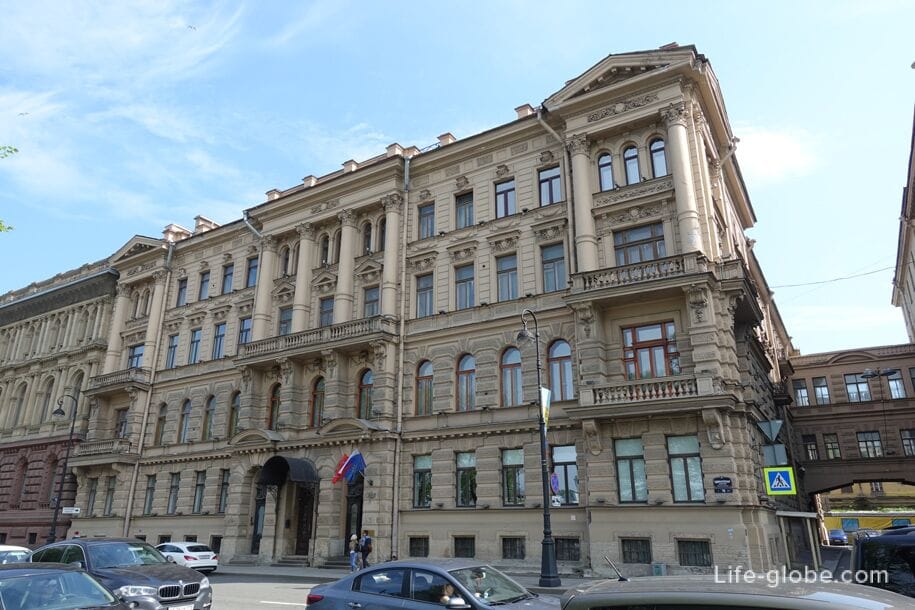
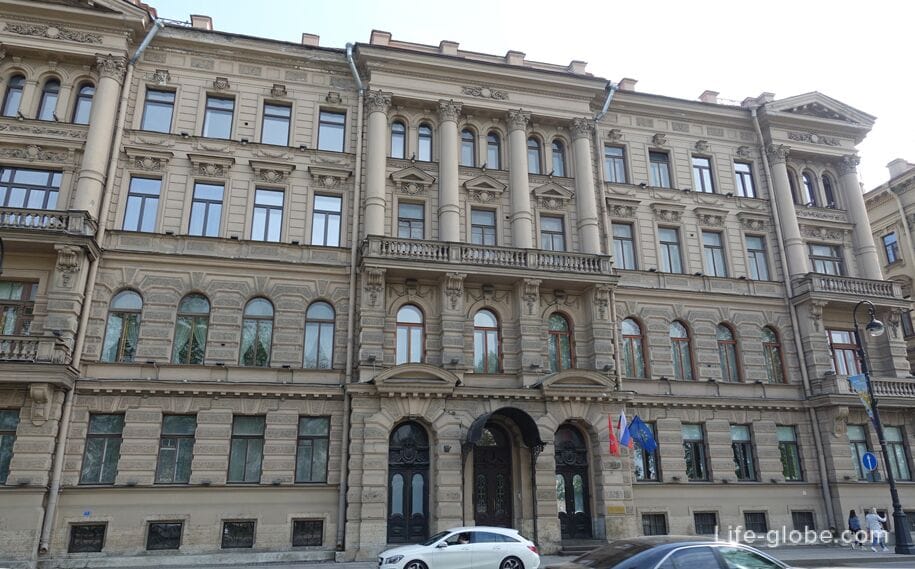
Through Chernomorsky Lane, the building along Admiralteiskaya Embankment 10 is connected by a covered passage to the building along Admiralteiskaya Embankment 12-14.
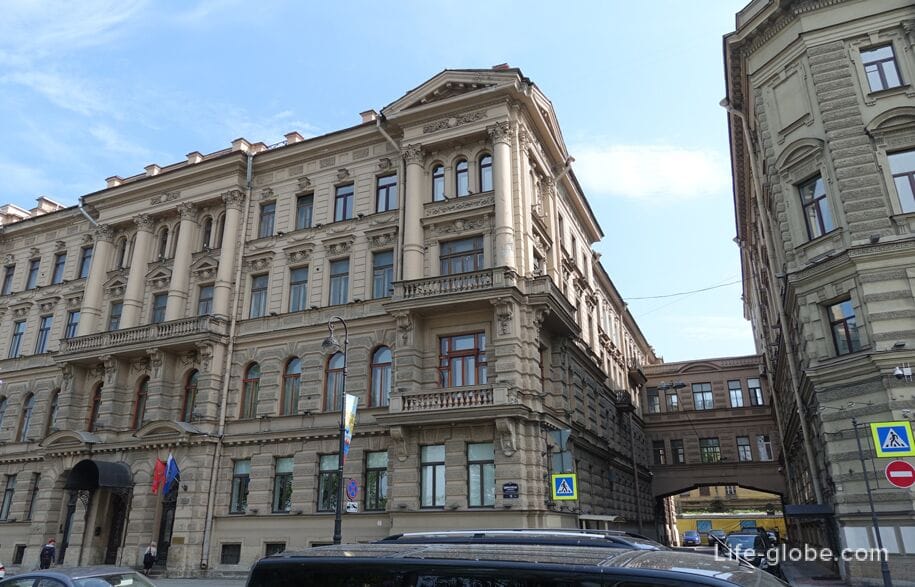
Admiralteiskaya Embankment 12-14 - Mutual Land Loan Society / Paulucci house / buildings of the Noble Land and Peasant land banks.
The house at number 14 was built in 1877-1880 by architects Nikolai Leontievich Benois and Alexander Ivanovich Krakau as a building of the Mutual Land Loan Society.
The house at number 12 was built in 1880-1881 by the architect Alexander Vasilyevich Ivanov for A.F. Paulucci. In 1912, the building was adapted for a bank with a change in the facade.
In 1912-1913, houses No. 12 and No. 14 were rebuilt into a single ensemble by architects A.V. Drucker and K.K. Tarasov. Before the establishment of Soviet power in 1917, the buildings were used as a Noble Bank and a Peasant Bank.
The style of the building is eclectic.

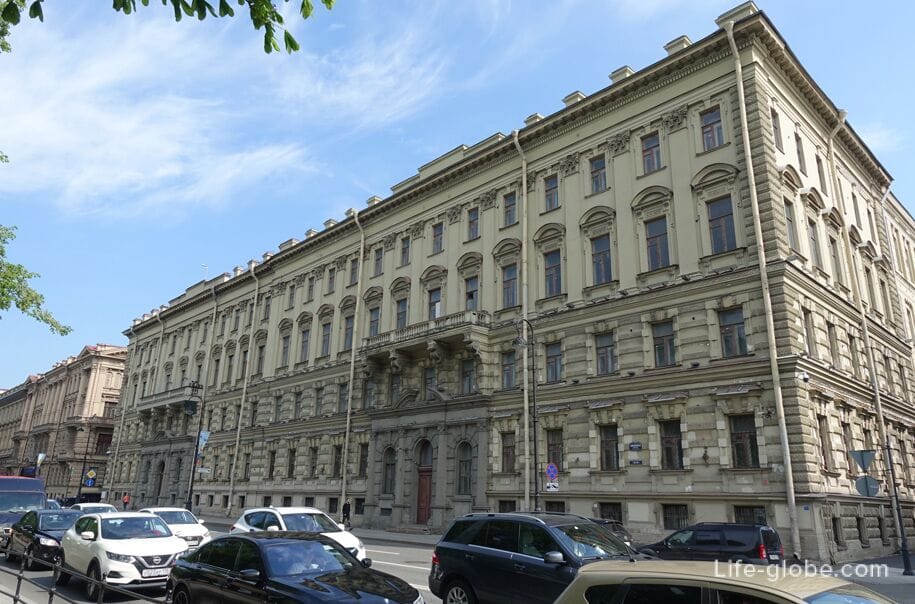
Today, within the walls of building 12-14, there is, among other things, a 4-star Bridge Hotel with a bar, free Wi-Fi throughout, free parking, a 24-hour front desk, a tour desk and family rooms.
The hotel offers pet-friendly accommodation.
Some rooms have a seating area. The standard roomsare equipped with a refrigerator, a flat-screen TV, a private bathroom with a bidet, a hairdryer and free toiletries.
Breakfast is included in the room rate. Link to the hotel
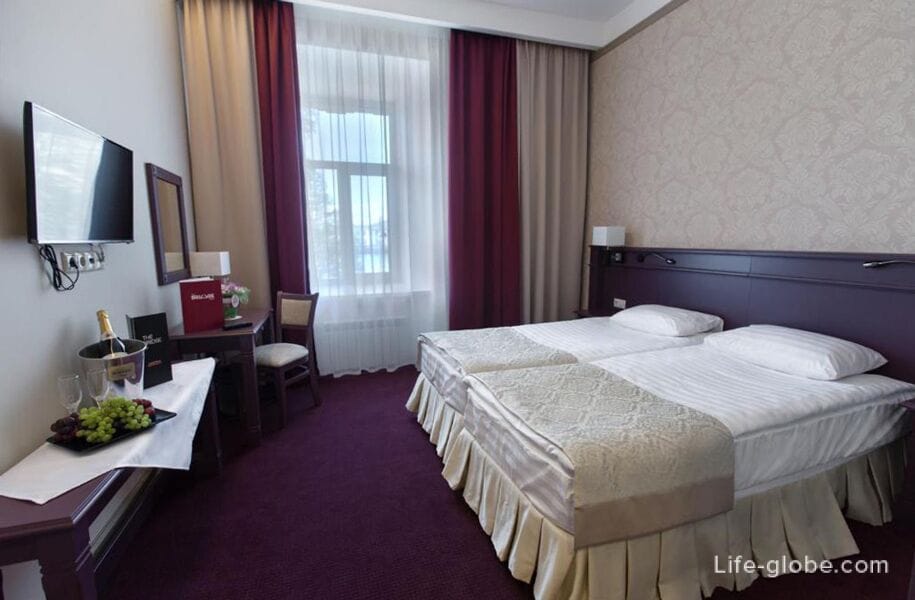
The Admiralteyskaya Embankment ends behind the spacious and wide Senate Square, which, in a modern look, combines a park area and some of the main attractions of St. Petersburg.
The dominant feature of the square is the equestrian statue of Peter I "The Bronze Horseman", which was created on the initiative of Catherine II by the French sculptor Etienne Maurice Falcone.
Behind the Senate Square, the Alexander Garden, behind which you can see St. Isaac's Cathedral, on the open part of the colonnade of which there is a public circular observation deck, giving beautiful 360-degree panoramic views of the historical center of St. Petersburg.
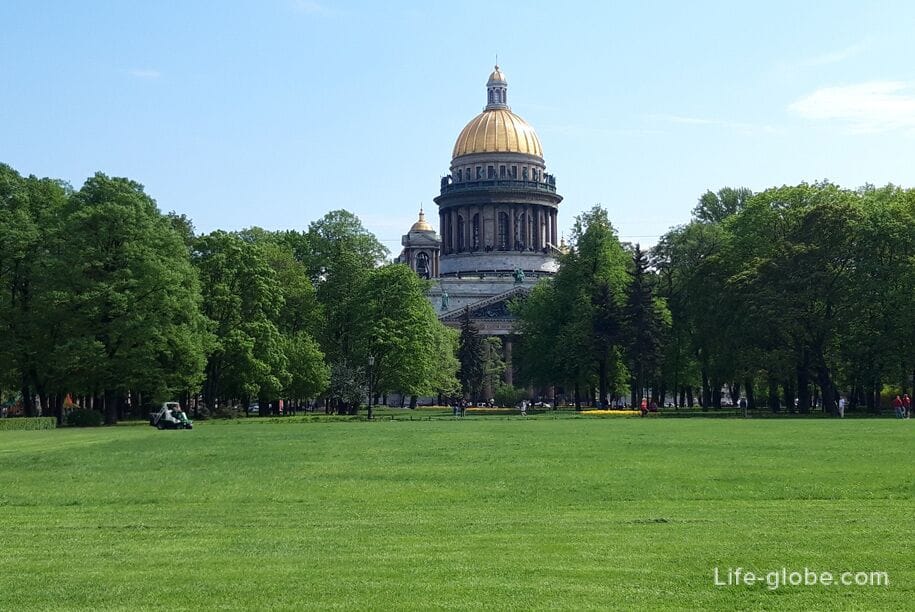
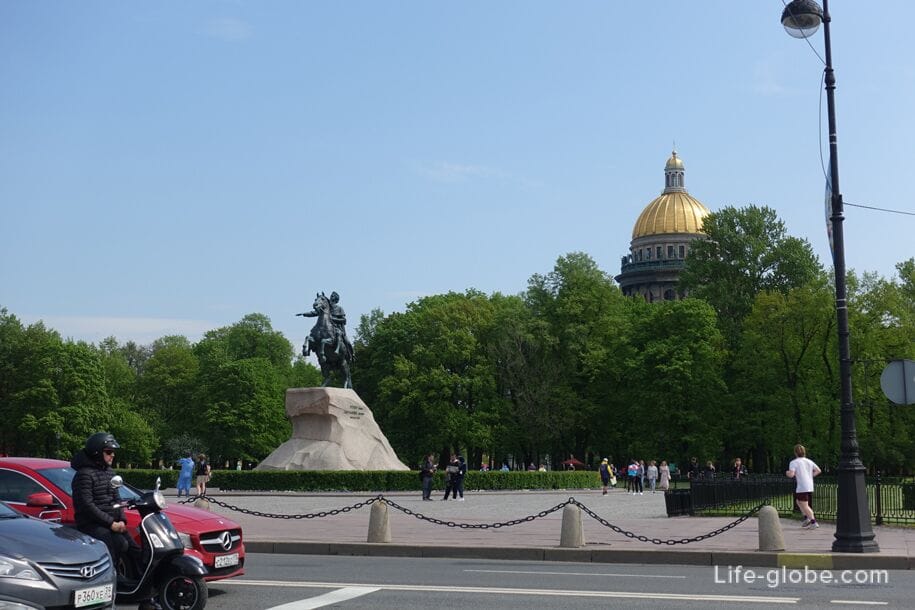
Nearest metro stations: "Admiralteiskaya", "Nevsky Prospekt", "Sennaya Ploshchad", "Sadovaya" and "Spasskaya".
All accommodation facilities in St. Petersburg, including in the city center, near the Admiralteiskaya Embankment and more remotely from those, can be viewed and booked here